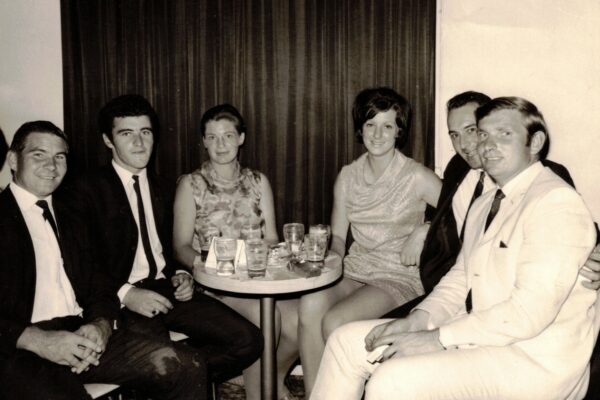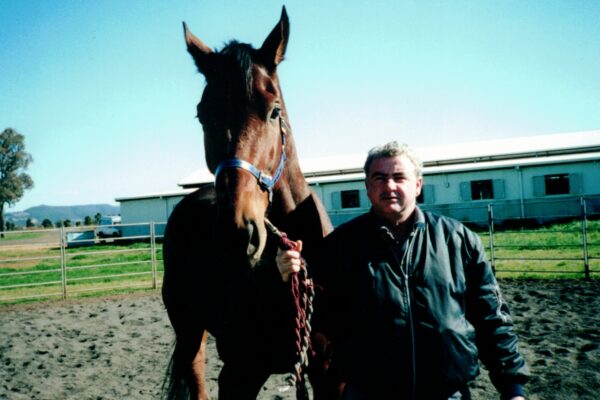Digests From World Turf Writers (1950)
The following vignettes are taken directly from ‘Thoroughbreds’: The Stud Breeders’ Magazine Volume 1 Number 1: Souvenir Issue 1950. They are ‘dated’ but might still throw some light on the inexact dilemma of breeding superior thoroughbreds; even today?
Featured Image: ‘Nasrullah’ (See the article ‘Right’ below) at ‘Spendthrift’ KY
See: https://sconevetdynasty.com.au/thoroughbreds-magazine-1950/
Prologue
Many notable breeders of yesteryear postulated their own pet theories of ‘inheritance of ability’ in thoroughbred horses. F K ‘Darby’ Mackay posited that there was what he called an ‘Electric Spark’ factor which came through in some individuals. He was an ardent student of both Mendelian Genetics and Charles Darwin’s ‘Origin of Species’. He was the person who once challenged me with the enigmatic conundrum of ‘What Makes a Good Horse’; and conversely ‘What Makes a Horse Good’! I’ll report back later (if I ever solve the riddle).
Both Colin McAlpine (Eureka Stud) and Colin Hayes (Lyndsay Park Stud) debated the concept of the ‘Energy Gene’ which I think might have been directly analogous with Darby Mackay’s ‘Electric Spark’ factor? There is no single simple answer but the following might help?
The Origin of the Vitality of the English Racehorse
In his seminal tome ‘Breeding Racehorses by the Figure System’ Bruce Lowe devotes Chapter II to the title cited above. He posits the question: Why is one horse so superior to his racing contemporaries’? He continues: ‘It undoubtedly consists of a greater concentration of vitality or nervous force in the animal.
‘Vital Spark’ (by Stanley Harrison in “The Thoroughbred Record”)
In the teeth of our certain knowledge that all great studs have been built up from one or two foundation mares we still persist in centring most attention on the sire line that rules a pedigree, and the less we learn the more prone we are to accept such reading of a pedigree because it requires less thought and is more agreeable to our introverted conceptions.
The more one studies the breeding of top-class horses (there are few, like Bahram and Citation, that merit the word great) the more does one realise that the vital spark which contributed to their class comes neither in direct male or female descent but has been inherited in the zig-zag fashion of lightning by the happy blending of characteristics we are so eagerly in quest of.
That a certain few individuals are especially endowed with the ability to transmit such characteristics is plain enough, but when their once pre-potent influence seems to be on the wane because they fail to carry through in direct male or direct female line we are foolishly apt to discredit them.
‘Genes’ (by Adrian Scrope in the “British Racehorse”)
Mendel’s Laws have successfully withstood some eighty years of scientific research. Consequently, it is of practical interest to examine the cardinal points known about inheritance, with special reference to the thoroughbred.
Fertilisation, the essential process in reproduction, depends upon the union of the male sperm and the female egg.
In both sperm and egg the important structure is known as the nucleus. The nucleus is made up of separate threads called chromosomes, the number varying in different domestic animals.
The chromosomes are of different lengths, and placed along them, like beads on a string, are tiny particles called genes. These genes, invisible even under the microscope, are of enormous importance, for they are responsible for each and every characteristic which will enter the composition of the future foal.
There are genes for coat colour, colour of eyes, high or low fertility, length of pastern, shape of hock, speed, stamina, temperament, in fact, genes for every particular trait.
Certain genes are known to cause hereditary defects, such as roaring and the breaking of blood vessels. Some of the genes are responsible for more than one factor.
Accordingly, the foal, a soon as the union of sperm and egg has occurred, begins to take shape according to the genes that it has received from the chromosomes of its parents.
The newborn foal can only possess characteristics given to it by its parents, but in the complicated process of cell division which precedes fertilisation, and at fertilisation itself, one of a vast number of possible combinations of maternal and paternal genes will result.
It is these varied combinations of genes which impart individuality to the offspring of identical matings, and explain why own brothers or own sisters may be so dissimilar in appearance and running ability.
The actual combination decides whether paternal or maternal influence will predominate in the foal.
See also:
http://www.tbheritage.com/GeneticMarkers/mtdnaintbBowling.html
https://sconevetdynasty.com.au/wp-admin/post.php?post=3594&action=edit
Right (by Audax in “Horse and Hound”)
In view of his great success at the stud, many people may regard the sale of ‘Nasrullah’ to the United States with mixed feelings. My personal view is that the sale is excellent news.
It is a long time since we made a sale to America of anything like this importance. During the past few years the French, cleverly exploiting a series of race successes, have had the field almost to themselves, and have exported a number of high-priced stallions to the United States.
At such a time when it seems impossible to convince some Americans that we still breed good horses, it is no use trying to redeem the situation by sending them a moderate stallion.
It is essential to sell them a good one. This, ‘Nasrullah’, third on the list this year (1950), has given evidence of being.
Philosophical Purview 70 Years ‘Down-the-Track’
It’s always intrigued me that the leading breeders in the latter half of the 20th Century invariably favoured strictly limiting ‘books of mares’ to their stallions? These included Stanley Wootton, A O Ellison, Reg Moses and F K ‘Darby’ Mackay. “Don’t go too often to the well” was the prevailing overarching opinion of my late mentor Murray Bain. The exception was George Ryder who was prepared to ‘push the limits’ on most things. However, for all his success at Woodlands, he never developed a champion stallion? S T Wootton considered that a book of about 20 mares was good for Biscay in his first year rising to 32 the following season? ‘Don’t push the old boy too hard’ was his mantra’; albeit Biscay was a very young stallion! Despite limited early patronage Biscay emerged as a very good sire; and sire-of-sires in Bletchingly and Marscay. He also features very prominently in modern pedigrees as a broodmare sire through his grandson Canny Lad and others.
Conversely animal reproduction expert Professor Bill Pickett of Colorado State University USA purported that libido was the main ‘limiting factor’? Spermatogenesis was a constant ‘full flow’ in most stallions.
Nowadays, with advanced technology, books of >200 mares per season are not uncommon in some leading stallions. This might be repeated in another hemisphere for those on the ‘shuttle’. The effect has been to reduce the number of active stallions from about 2,500 in the 1960s to around 700 today? What will be the long term effects? Were the ‘old boys’ (STW, AOE, RFM, FKM) right? Are there hidden ‘dilution factors’ which might apply? We know that ‘stallion vigour’ declines with advancing age. Why? Just musing.










